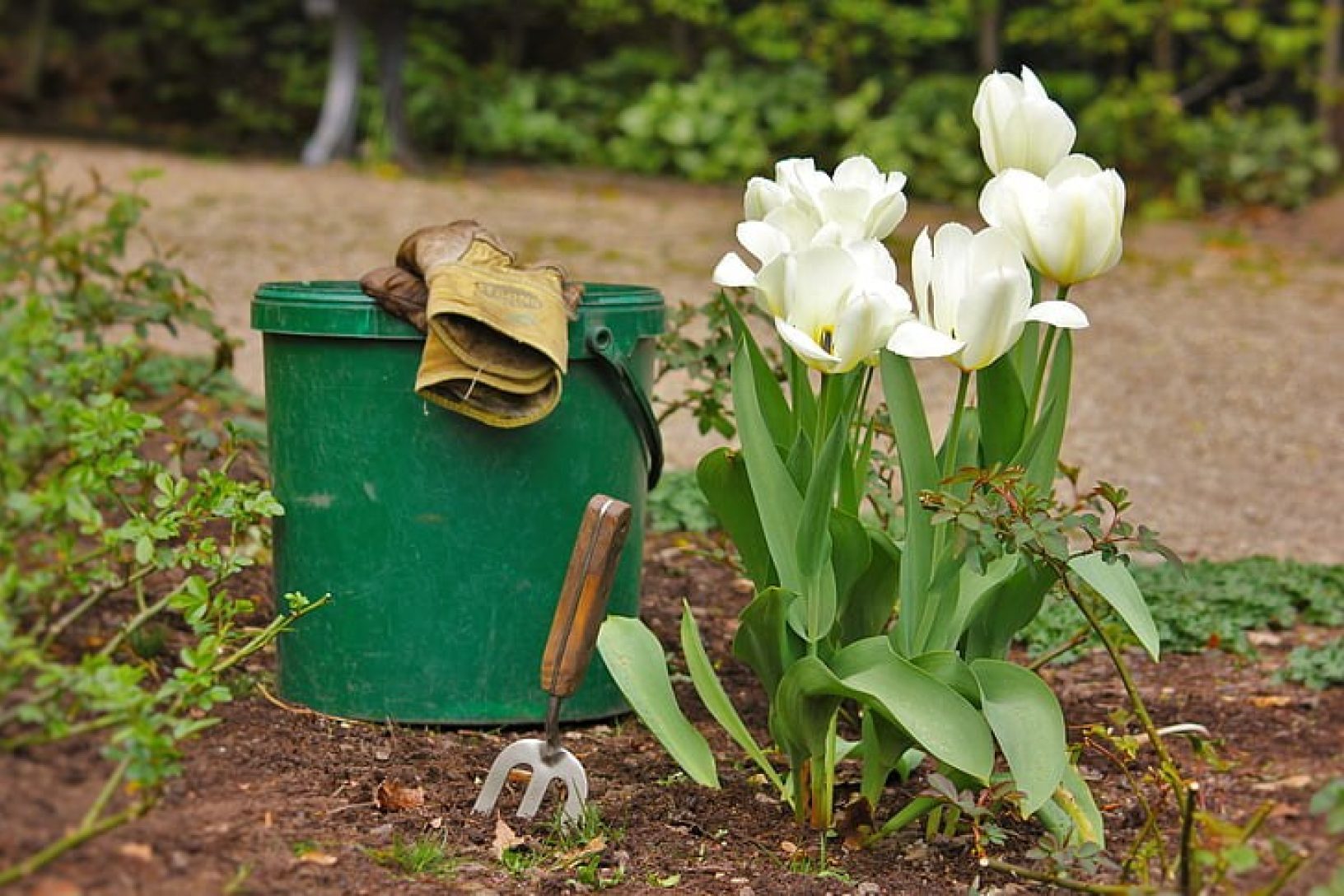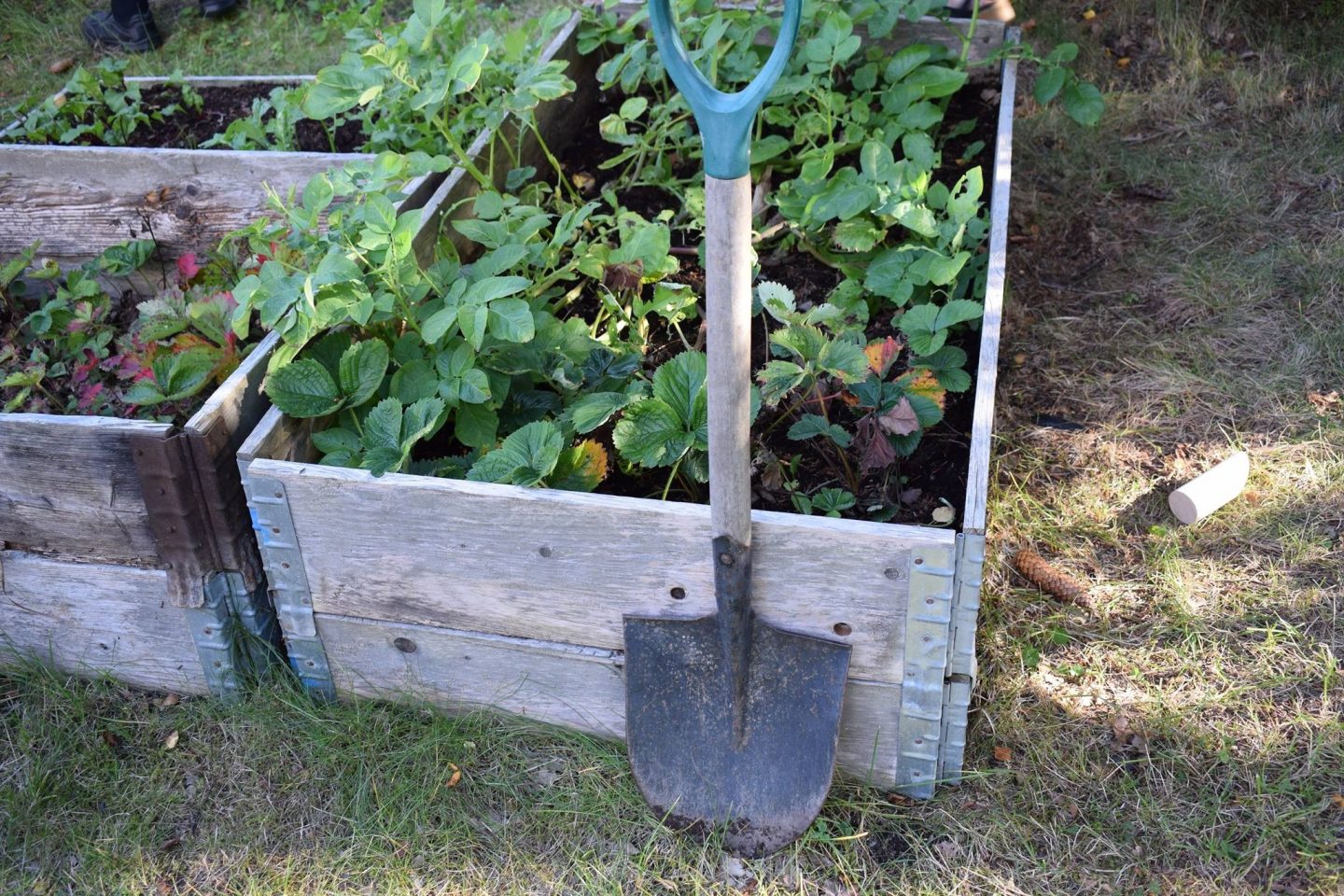Helpful information
Timing: Spring, summer
Where to do it: Outdoors
Garden space: Large garden, small garden

Timing: Spring, summer
Where to do it: Outdoors
Garden space: Large garden, small garden
Available now on iOS and Android, helping you garden your way to better health
Find out more
Plants, like people, do best when they have good nutrition. They take this from the soil they grow in.
There a number of ways we can help boost the nutritional level of soil. This includes through:
Liquid feeds provide some of the nutrients most important to plant growth:
Over-use of plant feed or fertiliser
Too much use of plant food or fertiliser can be harmful for plants and the soil. It's better to use too little than too much.
Which plants to use to make feed
There are a few plants that can be used to make liquid plant food. Here, we look at the three most common.
1. Comfrey
Comfrey has the highest level of nutrition. If you grow it in your garden, it will provide endless amounts of feed over many years of growth.
Comfrey is rich in potassium and good for fruit, vegetables and plants that have big shows of flowers.
2. Nettle
Nettle is high in nitrogen and good for herbs, shrubs and leaf vegetables, particularly brassicas.
The challenge may be collecting it, as many people don’t like to cultivate nettles in their own gardens. Don't pick nettles from wildlife or nature reserves, as this may disturb wildlife habitats. It's a good idea to check with the landowner if you are thinking of picking from another public or private space.
3. Dandelion
With dandelions, you make the feed using the root as well as the stem and leaves. This creates more micronutrients such as magnesium and iron, which are important in plant growth.
As with nettles, not everyone likes cultivating dandelions in their garden. Perhaps you will come around to growing them if they are a source of homemade plant food!
Which plants to give liquid feed to
Most of the plants in our garden will benefit from a liquid feed, including flowers and food produce.
Houseplants can have slightly different nutritional needs, but they will still benefit from your homemade plant food.

Essential items
Optional items
Follow these steps to create your liquid plant food with ease
Step 1: Gather all you need
Get together all your equipment at your working area.
Liquid feed can have a very strong smell, so it is strongly advised to keep the bucket somewhere outside!
Pouring feed out of the bucket once done can involve strength and bending. Reduce effort and strain by placing the bucket on a raised platform or bricks.
Step 2: Place the plant material in the bucket
Push your plant material to the bottom of the bucket. It’s advisable to wear gardening gloves for this – comfrey is prickly and nettles can, of course, sting.
There isn’t an exact science to how much plant material you need. The more you use, the stronger the feed will be.
You could place the plant material in a sack or old pair of tights first. This will make it easier to fish it out of the feed later. You will need to weight it at the bottom of the bucket with stones or a brick.
Step 3: Fill bucket with water
Add water to the bucket, almost to the top. If you have rainwater available, from a water butt for example, this is ideal. Otherwise you can fill using a hose or watering can.
If you have a large bucket or container, it will get heavy once filled with water. It is easier to have the bucket in position and bring the water to it, instead of trying to fill at the sink then lift.
Step 4: Cover, monitor and stir over time
Put the lid on your bucket or container, or place something across that top that will cover it.
Leave your feed for 2-4 weeks. Check and stir occasionally. Look to see if if it is bubbling. This is a sign that it is fermenting (breaking down / changing).
Once it has stopped bubbling, or the water has turned darker in colour, it is ready to use.
Do not taste or drink your liquid plant food at any point. This is a different process to making homemade teas.

To use your homemade liquid plant food, mix 1-part feed to 10 parts water in a watering can. If you didn't put your plant material in something, like old tights, you will need a sieve to strain the feed and remove the leaves.
The bucket of feed may be heavy. If you placed it on a platform (see step 1 above) this will make pouring into your watering can easier. Alternatively, use a small jug to transfer feed into a watering can.
Water around the base of plants and avoid watering leaves. If you have a strong feed mix, it could burn them.
You can use your liquid plant food once every few weeks while your plants are actively growing.